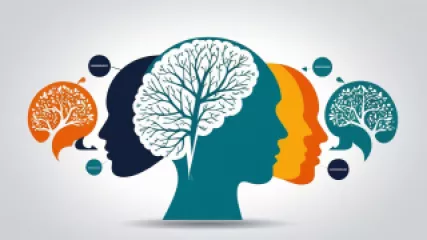Step-by-Step Guide to Resolving Cognitive Dissonance
Step-by-Step Guide to Resolving Cognitive Dissonance
Cognitive dissonance is a psychological phenomenon that occurs when an individual's beliefs, behaviors, or attitudes come into conflict with one another. This internal conflict can lead to feelings of unease, anxiety, and even distress. However, learning to identify and manage cognitive dissonance can be a powerful tool for personal growth and self-improvement.
In this comprehensive guide, we will explore the concept of cognitive dissonance in depth, provide practical strategies for resolving it, and offer insights from experts in the field. Whether you're struggling with a specific dilemma or simply want to better understand this important aspect of human psychology, this article will equip you with the knowledge and tools needed to navigate the complexities of cognitive dissonance.
Understanding Cognitive Dissonance
Cognitive dissonance was first introduced by the social psychologist Leon Festinger in the 1950s. At its core, cognitive dissonance is the mental discomfort or tension that arises when an individual holds two or more contradictory beliefs, ideas, or values simultaneously. This internal conflict can be triggered by a wide range of situations, from making a difficult decision to confronting new information that challenges our existing beliefs.
When we experience cognitive dissonance, our brain naturally seeks to restore a sense of balance and consistency. This often leads us to rationalize our beliefs, change our behaviors, or seek out information that reinforces our existing perspectives. However, the long-term consequences of unresolved cognitive dissonance can be detrimental to our personal growth and well-being.
Causes of Cognitive Dissonance
Cognitive dissonance can arise from a variety of sources, including:
- Conflicting Beliefs or Values: When an individual's beliefs, values, or attitudes clash, it can create a state of dissonance. For example, someone who values health and fitness but also enjoys indulging in unhealthy foods may experience cognitive dissonance.
- New Information or Experiences: Encountering information or experiences that contradict our existing beliefs can trigger cognitive dissonance. This can happen when we are exposed to new ideas, evidence, or perspectives that challenge our preconceptions.
- Difficult Decisions: Making a choice between two or more options, each with their own set of pros and cons, can lead to cognitive dissonance as the individual grapples with the potential outcomes and implications of their decision.
- Perceived Inconsistencies: Situations where our actions or behaviors do not align with our stated beliefs or values can also create cognitive dissonance. This can occur when we engage in behavior that contradicts our moral or ethical standards.
Understanding the root causes of cognitive dissonance is the first step in developing effective strategies for resolving it.
Recognizing the Signs of Cognitive Dissonance
Cognitive dissonance can manifest in a variety of ways, both physically and emotionally. Some common signs include:
- Anxiety or Stress: The internal conflict created by cognitive dissonance can lead to feelings of anxiety, stress, and unease.
- Rationalization or Justification: Individuals may attempt to rationalize their beliefs or behaviors in order to reduce the discomfort of cognitive dissonance.
- Avoidance or Denial: Some people may try to avoid or deny the existence of the dissonant information or experiences in an effort to maintain their existing beliefs and attitudes.
- Emotional Responses: Cognitive dissonance can elicit strong emotional reactions, such as anger, frustration, or even depression, as the individual struggles to reconcile their conflicting thoughts and feelings.
- Difficulty Making Decisions: The uncertainty and conflicting information associated with cognitive dissonance can make it challenging for individuals to make decisions or take decisive action.
By recognizing these signs, you can more effectively identify and address cognitive dissonance in your own life or in the lives of those around you.
Strategies for Resolving Cognitive Dissonance
Resolving cognitive dissonance requires a multi-faceted approach that involves both cognitive and behavioral strategies. Here are some effective techniques for managing and overcoming cognitive dissonance:
1. Acknowledge and Embrace the Dissonance
The first step in resolving cognitive dissonance is to openly acknowledge and accept the existence of the internal conflict. Trying to ignore or suppress the dissonance will only lead to further discomfort and avoidance. By embracing the dissonance, you can begin to explore the underlying causes and work towards a resolution.
2. Gather Objective Information
Once you've recognized the cognitive dissonance, the next step is to gather objective information that can help you better understand the situation. This may involve researching the topic, consulting experts, or engaging in open discussions with individuals who hold different perspectives. By gathering more information, you can begin to challenge your existing beliefs and identify potential areas of growth or change.
3. Reframe Your Perspective
Cognitive dissonance often arises from a narrow or rigid perspective. To resolve this, try to reframe your understanding of the situation by considering alternative viewpoints, perspectives, and perspectives. This can involve actively challenging your own assumptions, questioning your biases, and exploring new ways of thinking about the issue at hand.
4. Engage in Self-Reflection
Cognitive dissonance can be a powerful catalyst for personal growth and self-discovery. Take time to engage in deep self-reflection to better understand the underlying causes of the dissonance, your own motivations and values, and the ways in which your beliefs and behaviors may be in conflict. This introspective process can help you develop a more nuanced and self-aware approach to resolving the dissonance.
5. Seek Support and Guidance
Resolving cognitive dissonance can be a challenging and emotionally taxing process. Consider seeking support and guidance from a cognitive dissonance expert, professional counselor, or trusted friends and family members. They can provide valuable insights, objective feedback, and emotional support as you navigate the complexities of the dissonance.
6. Gradually Implement Behavioral Changes
Once you've gained a deeper understanding of the cognitive dissonance and explored alternative perspectives, the next step is to gradually implement behavioral changes that align with your values and beliefs. This may involve making difficult decisions, altering habits and routines, or taking actions that challenge your existing patterns of behavior.
7. Practice Self-Compassion
Resolving cognitive dissonance can be a complex and emotionally draining process. Be kind and compassionate with yourself throughout this journey. Recognize that dissonance is a natural part of the human experience and that progress may not always be linear. By practicing self-compassion, you can more effectively navigate the ups and downs of the process and maintain a growth-oriented mindset.
Cognitive Dissonance Intervention and Professional Help
In some cases, cognitive dissonance can be particularly challenging to resolve on one's own. If you find that the dissonance is causing significant distress, disrupting your daily life, or preventing you from making meaningful progress, it may be beneficial to seek professional help.
Cognitive dissonance experts, therapists, and online counseling services can provide valuable support and guidance. These professionals can help you:
- Deeply explore the root causes of your cognitive dissonance
- Develop personalized strategies for resolving the dissonance
- Provide accountability and support throughout the process
- Offer evidence-based techniques for managing stress and anxiety
- Help you implement sustainable behavioral changes
By working with a cognitive dissonance professional, you can gain a deeper understanding of your own thought patterns, beliefs, and behaviors, and ultimately achieve a greater sense of clarity, confidence, and well-being.
Cognitive Dissonance and Self-Improvement
While cognitive dissonance can be a source of significant discomfort and distress, it can also be a powerful catalyst for personal growth and self-improvement. By embracing the dissonance and engaging in the process of resolution, individuals can:
- Develop Greater Self-Awareness: Navigating cognitive dissonance requires a deep dive into one's own beliefs, values, and behaviors, leading to increased self-knowledge and understanding.
- Challenge Biases and Expand Perspectives: Resolving cognitive dissonance often involves considering alternative viewpoints and challenging one's own biases, which can lead to a more open and flexible mindset.
- Enhance Decision-Making Abilities: The process of resolving cognitive dissonance can improve an individual's ability to make well-informed, values-aligned decisions.
- Foster Personal Resilience: Effectively navigating cognitive dissonance can build emotional resilience, as individuals learn to manage the discomfort of internal conflicts and adapt to change.
- Promote Authentic Living: By aligning their beliefs, behaviors, and values, individuals can achieve a greater sense of authenticity and integrity in their lives.
Ultimately, cognitive dissonance can be a profound opportunity for self-improvement and personal growth, provided that individuals are willing to engage in the challenging but rewarding process of resolving it.
Cognitive Dissonance and Online Counseling
In today's digital age, online counseling has emerged as a valuable resource for individuals seeking support in navigating cognitive dissonance. Online counseling services offer several key benefits:
- Accessibility: Online counseling allows individuals to access professional support from the comfort of their own homes, overcoming barriers such as location, scheduling, and mobility limitations.
- Convenience: With flexible scheduling and the ability to connect with a counselor through various digital platforms, online counseling provides a more convenient option for those seeking help.
- Anonymity: For some individuals, the anonymity afforded by online counseling can create a more comfortable and judgment-free environment for exploring sensitive issues related to cognitive dissonance.
- Personalized Approach: Online counselors can tailor their interventions and strategies to the unique needs and circumstances of each client, ensuring a more personalized and effective approach to resolving cognitive dissonance.
By leveraging the power of online counseling, individuals can access the support and guidance they need to navigate the complexities of cognitive dissonance, ultimately leading to greater personal growth and well-being.
Conclusion: Embracing the Dissonance, Fostering Growth
Cognitive dissonance is a powerful and complex psychological phenomenon that can have significant impacts on our thoughts, emotions, and behaviors. However, by understanding the underlying causes of dissonance, recognizing the signs, and implementing effective strategies for resolution, individuals can transform this internal conflict into a catalyst for personal growth and self-improvement.
Through self-reflection, seeking support, and gradually implementing behavioral changes, individuals can navigate the challenges of cognitive dissonance and emerge with a greater sense of clarity, authenticity, and resilience. Whether you are grappling with a specific dilemma or simply seeking to deepen your understanding of this important aspect of human psychology, this comprehensive guide has equipped you with the knowledge and tools needed to embrace the dissonance and foster meaningful, lasting change.
Remember, cognitive dissonance is a natural part of the human experience, and by approaching it with compassion, curiosity, and a willingness to learn, you can unlock its transformative potential and embark on a journey of self-discovery and personal growth.






